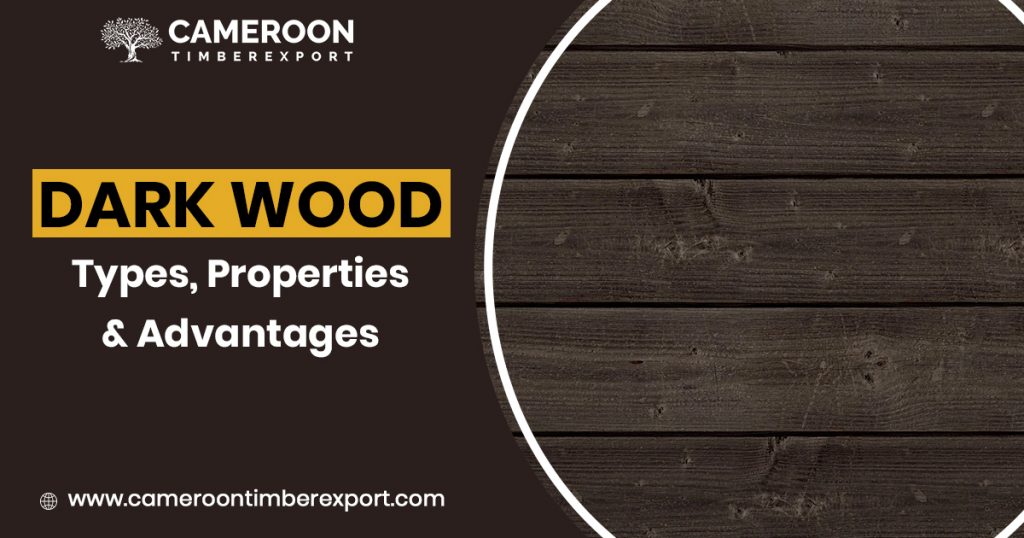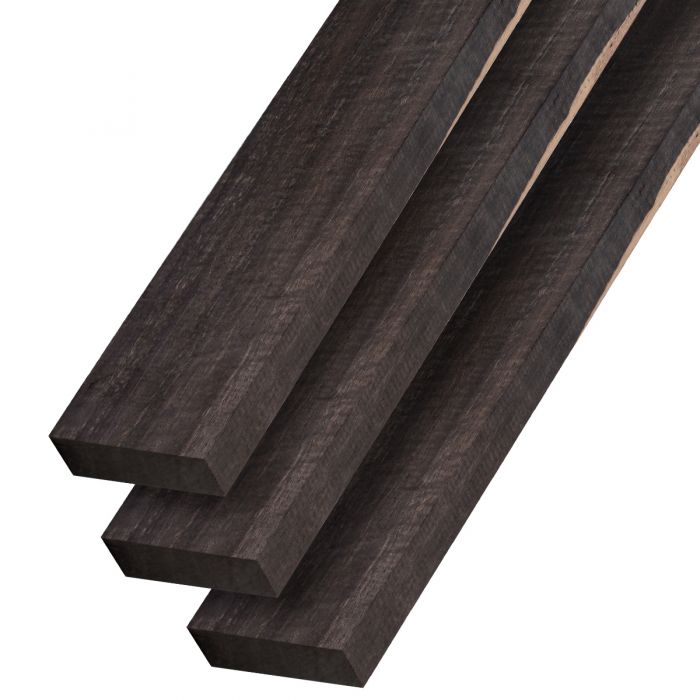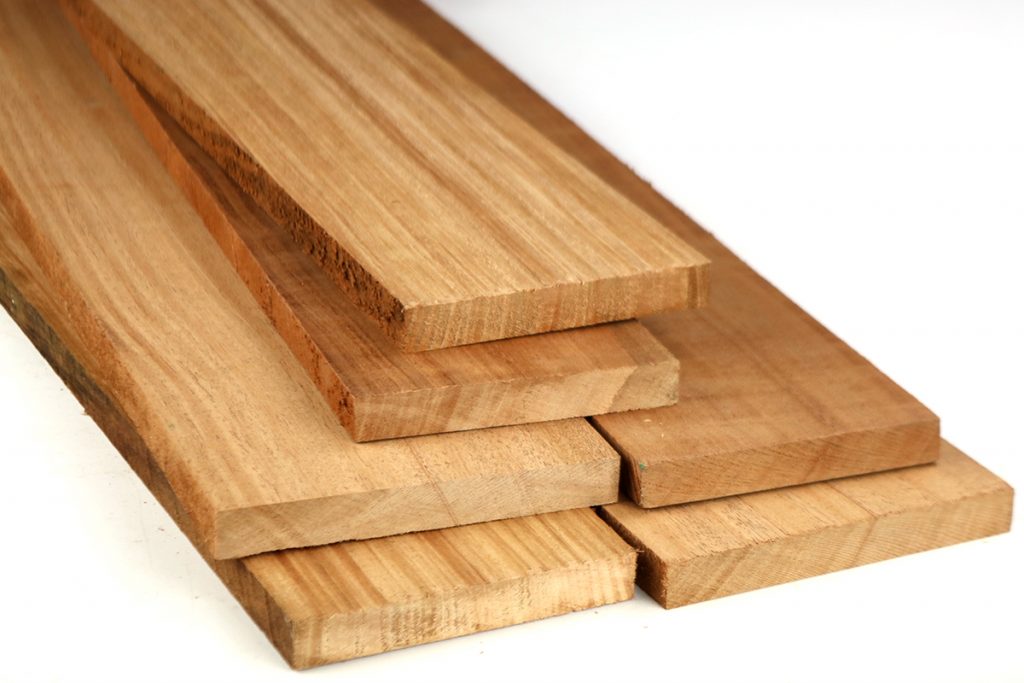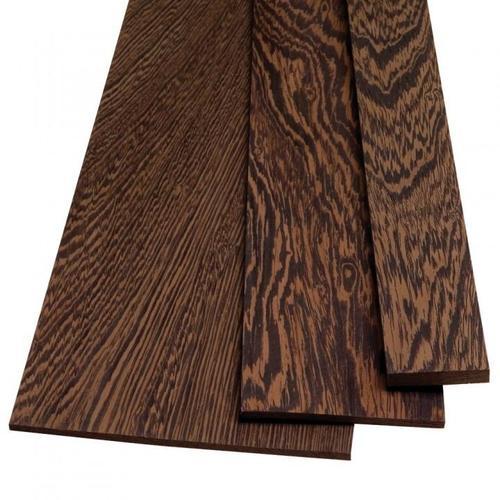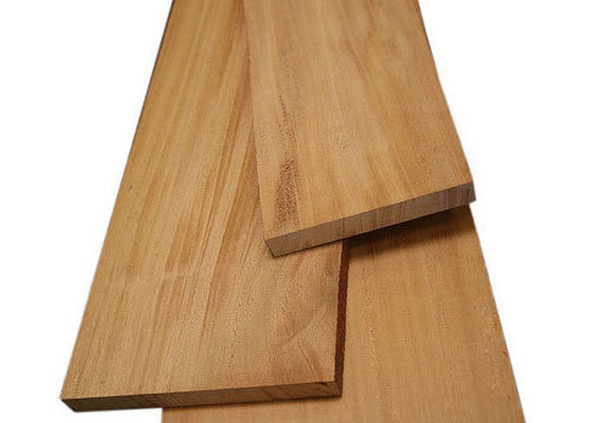Any wood that has a dark natural colour will be referred to as dark wood. These woods are generally more popular and expensive because they have a high demand and look attractive for interior applications.
Here’s everything you need to know about dark wood species, including the types, properties and advantages.
In most cases, dark woods are hardwoods, which is also why they are strong, stable and durable and suitable for all kinds of timber applications, especially interior projects.
Types of Dark Wood (Popular Wood Species Examples)
These woods are quite common in all parts of the world. Different dark wood species are used in different countries. Here are some of the most popular types of dark wood.
Ebony
Ebony is one of the darkest woods available in nature. It is practically black in colour. As a hardwood, ebony wood is extremely strong, durable and resistant to termites and insects. It is exceptionally stable and therefore suitable for a range of applications, including furniture making. Because ebony has a high demand, it is generally expensive and not easily available.
Due to its extremely high density, ebony is not always easy to work with, especially with hand tools. It is widely used for making high-quality furniture and interior objects such as cabinets, musical instruments, etc.
Mahogany
Mahogany is one of the most popular dark woods. It is available in many subspecies, most of which are concentrated in Central and South America. Mahogany wood colour is dark reddish-brown. The wood has high durability, strength and density, which makes it suitable for a range of high-quality applications such as premium furniture and musical instruments.
Mahogany is easily available and moderately priced. Uses include furniture, cabinetry, veneers, turned objects, boats, musical instruments, and carving.
Walnut
Walnut is another popular naturally strong and dense dark wood. The wood grows in many parts of the world, including the Americas, Asia, Southern Europe, and the West Indies. The walnut timber is dark chocolate brown and the sapwood is light brown. It has good density and is easy to work with. Common uses include furniture, veneering, cabinetry, gunstocks, wooden speciality objects, turned items, and interior panelling.
Wenge
Wenge is a dark-coloured wood commonly sourced from Central Africa. It has a medium brown heartwood with black streaks, which can be turned to nearly black by the application of certain oil finishes. Wenge wood is extremely strong, durable and dense, which makes it slightly difficult to work with. It has good termite resistance. Common uses of wenge include furniture, veneering, panelling, musical instruments, and turned objects.
Teak
Teak is another hardwood that is deep dark in colour and is strong and durable. The wood is exclusively found in Southern Asia forests. It is resistant to termites and rot. The heartwood is medium brown, and the sapwood is creamy white. Common uses include furniture, veneering, carving, turnings, boat buildings, and exterior construction.
Dark Wood Properties, Pros & Cons
Like most hardwoods, most dark woods also share similar characteristics. For instance, most dark woods are strong, dense and durable. Of course, they all share a similar, dark colour, which might range from intense dark (black – ebony) to medium or dark brown or reddish-brown. The point is that they all are dark.
These dark hardwoods are also better-looking, with or without finish, as compared to the lighter species. Because they are dense, they can be difficult to work with.
Pros of Dark Wood
- Dark wood species are strong and extremely durable.
- They have outstanding resistance to rot, insects and termite.
- The wood looks exceptionally beautiful and maintains its natural looks for a long time.
- Because it is durable and strong, it will easily last for decades.
- Furniture and items made from dark wood look premium and stunningly beautiful.
Cons of Dark Wood
- The wood is generally rare and expensive, depending on where you live.
- Not all the wood species are easy to stain, though they all look great naturally.
- Scratches are more visible in the dark hardwood.
If you are looking to buy the perfect types of dark wood for your project, we have many options available here at CameroomTimberExportSarl. Contact us to enquire about the availability and the best price for premium quality wood species, mahogany, wenge, walnut, ebony, teak, and more.

